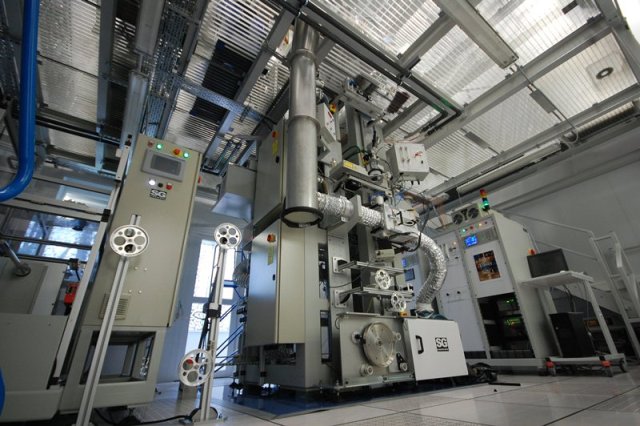Jul 6 2015
A team of researchers from the University of Southampton are working to test the use of additive manufacturing, or 3D printing, methods in optical fibre fabrication. This novel technique of producing optical fibre could lead to the creation of highly intricate structures with the ability to unlock numerous applications across several industries such as biotechnology, telecommunications and aerospace.
 Silica fibre drawing tower
Silica fibre drawing tower
Optical fibres are drawn from a piece of glass called a preform. Existing methods to fabricate optical fibre preforms can provide a reliable structure down the entire length of the preform, but cannot control the composition and shape of the fibre in three dimensions. This makes it hard for engineers to design the fibre freely, limiting the capabilities that can be offered by the fibre.
Professor Jayanta Sahu, along with his team from the university’s Zepler Institute and Dr Shoufeng Yang, the project’s co-investigator from the Faculty of Engineering and Environment, are developing this new method to aid engineers in the fabrication of more complex structured preforms with varied features along their lengths.
“We will design, fabricate and employ novel Multiple Materials Additive Manufacturing (MMAM) equipment to enable us to make optical fibre preforms (both in conventional and microstructured fibre geometries) in silica and other host glass materials,” says Professor Sahu. “Our proposed process can be utilised to produce complex preforms, which are otherwise too difficult, too time-consuming or currently impossible to be achieved by existing fabrication techniques.”
The greatest challenge in the creation of an optical fibre is the preform fabrication stage, especially in cases where the preform has a complex internal structure, such as in a new class of microstructured fibre known as photonic bandgap fibre. The photonic bandgap fibre is expected to transform the datacom and telecom sectors.
At the moment, several microstructured fibres are fabricated using the cumbersome ‘stack and draw’ method, which requires the stacking of many smaller glass canes or capillaries together by hand so as to build the preform. The new additive manufacturing method will enable complex fibre structures to be built using ultra-pure glass powder, in a layer-by-layer format. This gradually helps to create a preform measuring several tens of centimetres in lengths.
However, there are many obstacles to overcome, such as the high melting temperature of the glass measuring more than 2000 ˚C (in case of silica), the need for accurate control of dopants, refractive index profiles and waveguide geometry, and the need for smooth transition between the layers to prevent the resultant fibre’s properties from being distorted.
This project was funded by the Engineering and Physical Sciences Research Council (EPSRC), and allows the researchers to work alongside three companies, namely ES Technology (Oxford, UK), a provider of laser material processing systems, Fibercore (Southampton, UK), a supplier of specialty fibre, and SG Controls (Cambridge UK), a leading manufacturer of optical fibre equipment.
“We hope our work will open up a route to manufacture novel fibre structures in silica and other glasses for a wide range of applications, covering telecommunications, sensing, lab-in-a-fibre, metamaterial fibre, and high-power lasers,” says Professor Sahu. “This is something that has never been tried before and we are excited about starting this project.”